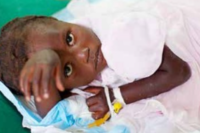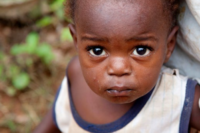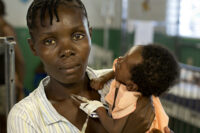By William B. Guyol, Jr., M.D.
A visit to Hôpital Sacré Coeur brings the sense of joy and fulfillment that drew me to the medical profession in the first place. It is liberating to practice medicine without worrying about billing, procedure and diagnostic codes, utilization review, pre-certification of tests and other third-party intrusions on your relationships with patients. You are there simply to help, learn and teach. It is medicine without the nonsense.
The responsibilities of visiting teams changed after the January earthquake. Volunteers were thrown into the role of providing care to hundreds of critically wounded patients, working long hours and unfortunately having little contact with the Haitian medical staff, who continued their usual duties of caring for the patients from Milot and the surrounding areas. This was quite different from the usual routine.
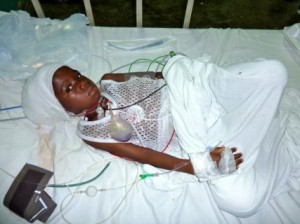 The usual routine is delightful, with a pace of activity more relaxed than at home. Surgical teams have a leisurely breakfast and start cases at 8 AM. They are often finished in time for supper. Internists like myself and other primary care physicians work the morning clinics, give lectures, make hospital rounds and are often finished in time to take a walk to town or send a few emails before supper. Evenings are usually free to play cards, read, chat and drink a Prestige or two.
The usual routine is delightful, with a pace of activity more relaxed than at home. Surgical teams have a leisurely breakfast and start cases at 8 AM. They are often finished in time for supper. Internists like myself and other primary care physicians work the morning clinics, give lectures, make hospital rounds and are often finished in time to take a walk to town or send a few emails before supper. Evenings are usually free to play cards, read, chat and drink a Prestige or two.
Hôpital Sacré Coeur has always been a teaching institution. Visiting physicians and nurses work closely with the Haitian staff and the exchange of information benefits both parties. Our Haitian colleagues are well trained. Many of the physicians, such as Drs. Chalumeau, Previl and Bernard are superb physicians, who could have very successful careers in the states. All of the internists and pediatricians I have met are also quite good.
The spectrum of disease seen in Milot can be quite different that what you are used to. Patients may present very late in the course of their disease due to simple lack of access to care. Adults present with hernias the size of basketballs because no therapy was available when they were young. Patients with cancer may present in very late stages with massive fungating tumors that even surgery cannot palliate. I have seen many patients in the medicine clinics with advanced rheumatic heart disease or late complications from congenital heart disease that would have been diagnoses and treated in childhood in the states. It is both disturbing and fascinating to see diseases you would never see at home.
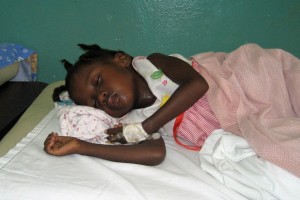 During my first trip there were several cases of bowel perforation and peritonitis due to typhoid, something I have never seen in 25 years of practice at home. Tuberculosis, a rarity in my practice is endemic and enters into the differential diagnosis of any symptom or complaint. For patients with back pain, fever, adenopathy, ascites, pleural effusions and weight loss TB should be high on the list of potential causes. There is so
During my first trip there were several cases of bowel perforation and peritonitis due to typhoid, something I have never seen in 25 years of practice at home. Tuberculosis, a rarity in my practice is endemic and enters into the differential diagnosis of any symptom or complaint. For patients with back pain, fever, adenopathy, ascites, pleural effusions and weight loss TB should be high on the list of potential causes. There is so
much to learn that evenings are often spent on the computer reading to reinforce the lessons you would have learned nowhere else.
Patient compliance with medical advice can be erratic. While some patients are meticulous in taking their medicines and watching their diet, many are not. This is in part due to lack of education, which our community health department works hard to overcome. It is due in large part to economics. Medicine given at little or no cost from the hospital can be sold on the black market for the money to buy essentials such as food. It is hard to appreciate the need to take a blood pressure medicine to prevent a stroke in the future when you are starving today. Many patients hedge their bets by obtaining care from the local voodoo priest, who offers solutions that at best delay a trip to the hospital for real care and at worst make them deathly ill.
Medical staff positions at Hôpital Sacré Coeur are prized because of the stellar reputation the hospital has as a teaching institution. The opportunity to work side-by-side with American physician and nurse volunteers is something unique to our institution. Surgeons work side by side with our Haitian staff. Primary care physicians attend clinics and make rounds on the inpatients with the staff, providing an opportunity for both to learn. Visitors prepare lectures on topics of interest. CRUDEM’s educational committee is creating a more formal curriculum too so guest lecturers address the core areas of competency in internal medicine and pediatrics. The lectures are always well attended by physicians and nurses from all specialties hoping to glean a few helpful tips to boost their fund of knowledge and improve the quality of care.
The Department of Health, Catholic Relief Services, the University of Notre Dame in Port au Prince (alas, not my alma mater) are developing postgraduate professional training programs for physicians and nurses and have chosen Hôpital Sacré Coeur as a partner. Infectious disease and HIV care, critical care and trauma programs will be offered for physicians. There will be programs for training operating room nurses and nurse practitioners. For years we have improved the quality of care in the region around Milot. We have been so successful that we now can play a role in training a post-earthquake generation of Haitian physicians and nurses to improve care of the Haitian people elsewhere.
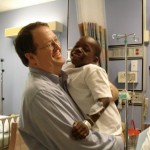 For the past twenty-five years, Dr. Guyol has maintained a St. Louis based private practice in Internal Medicine. He received his M.D. from St. Louis University where he also trained in Internal Medicine before being appointed Chief Resident at St. Louis Hospital. Dr. Guyol proudly points out he has an undergraduate degree from the University of Notre Dame. He is married and has four children and serves on the CRUDEM Board of Directors.
For the past twenty-five years, Dr. Guyol has maintained a St. Louis based private practice in Internal Medicine. He received his M.D. from St. Louis University where he also trained in Internal Medicine before being appointed Chief Resident at St. Louis Hospital. Dr. Guyol proudly points out he has an undergraduate degree from the University of Notre Dame. He is married and has four children and serves on the CRUDEM Board of Directors.





